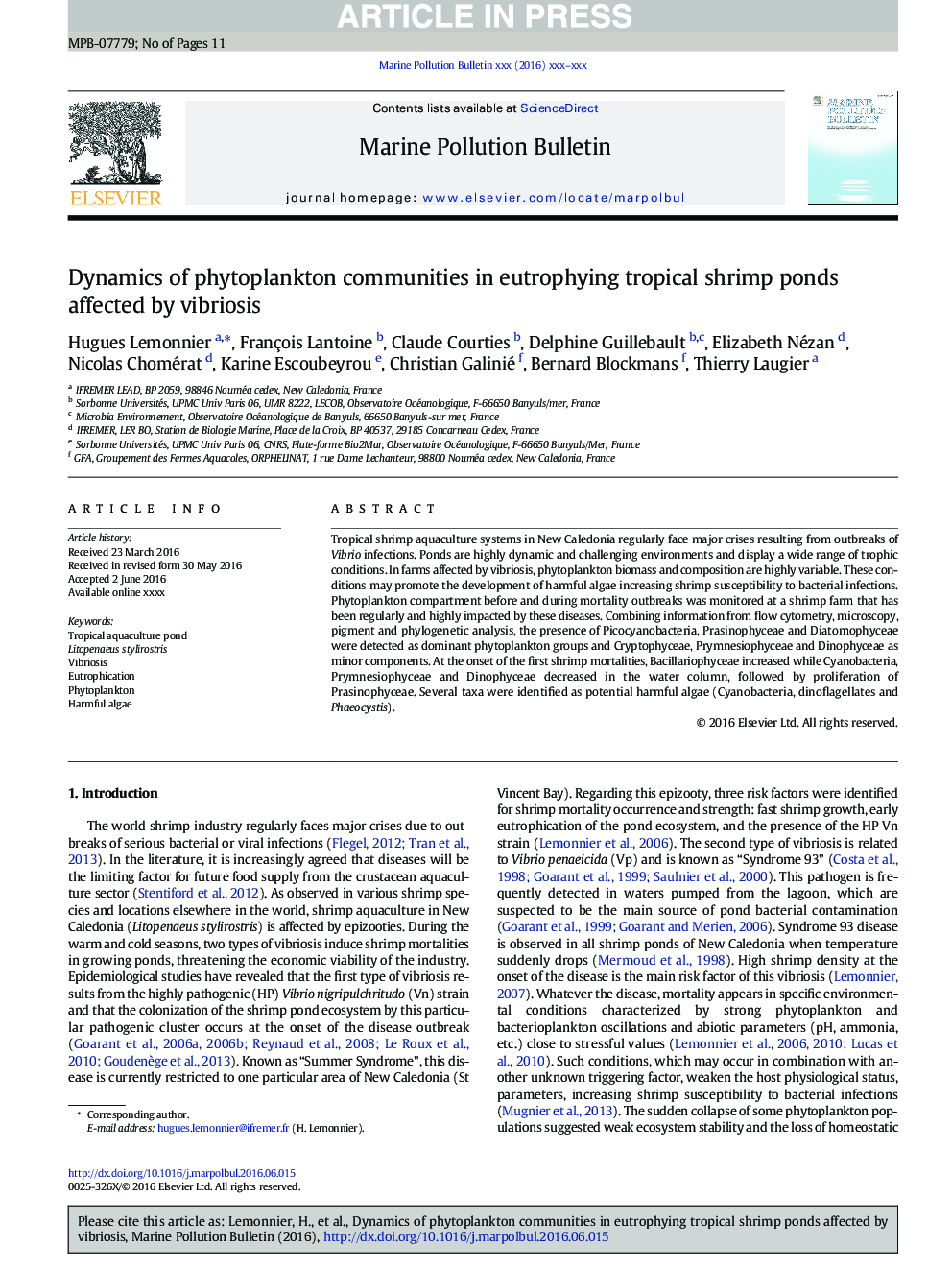| Article ID | Journal | Published Year | Pages | File Type |
|---|---|---|---|---|
| 6355724 | Marine Pollution Bulletin | 2016 | 11 Pages |
Abstract
Tropical shrimp aquaculture systems in New Caledonia regularly face major crises resulting from outbreaks of Vibrio infections. Ponds are highly dynamic and challenging environments and display a wide range of trophic conditions. In farms affected by vibriosis, phytoplankton biomass and composition are highly variable. These conditions may promote the development of harmful algae increasing shrimp susceptibility to bacterial infections. Phytoplankton compartment before and during mortality outbreaks was monitored at a shrimp farm that has been regularly and highly impacted by these diseases. Combining information from flow cytometry, microscopy, pigment and phylogenetic analysis, the presence of Picocyanobacteria, Prasinophyceae and Diatomophyceae were detected as dominant phytoplankton groups and Cryptophyceae, Prymnesiophyceae and Dinophyceae as minor components. At the onset of the first shrimp mortalities, Bacillariophyceae increased while Cyanobacteria, Prymnesiophyceae and Dinophyceae decreased in the water column, followed by proliferation of Prasinophyceae. Several taxa were identified as potential harmful algae (Cyanobacteria, dinoflagellates and Phaeocystis).
Related Topics
Physical Sciences and Engineering
Earth and Planetary Sciences
Oceanography
Authors
Hugues Lemonnier, François Lantoine, Claude Courties, Delphine Guillebault, Elizabeth Nézan, Nicolas Chomérat, Karine Escoubeyrou, Christian Galinié, Bernard Blockmans, Thierry Laugier,
